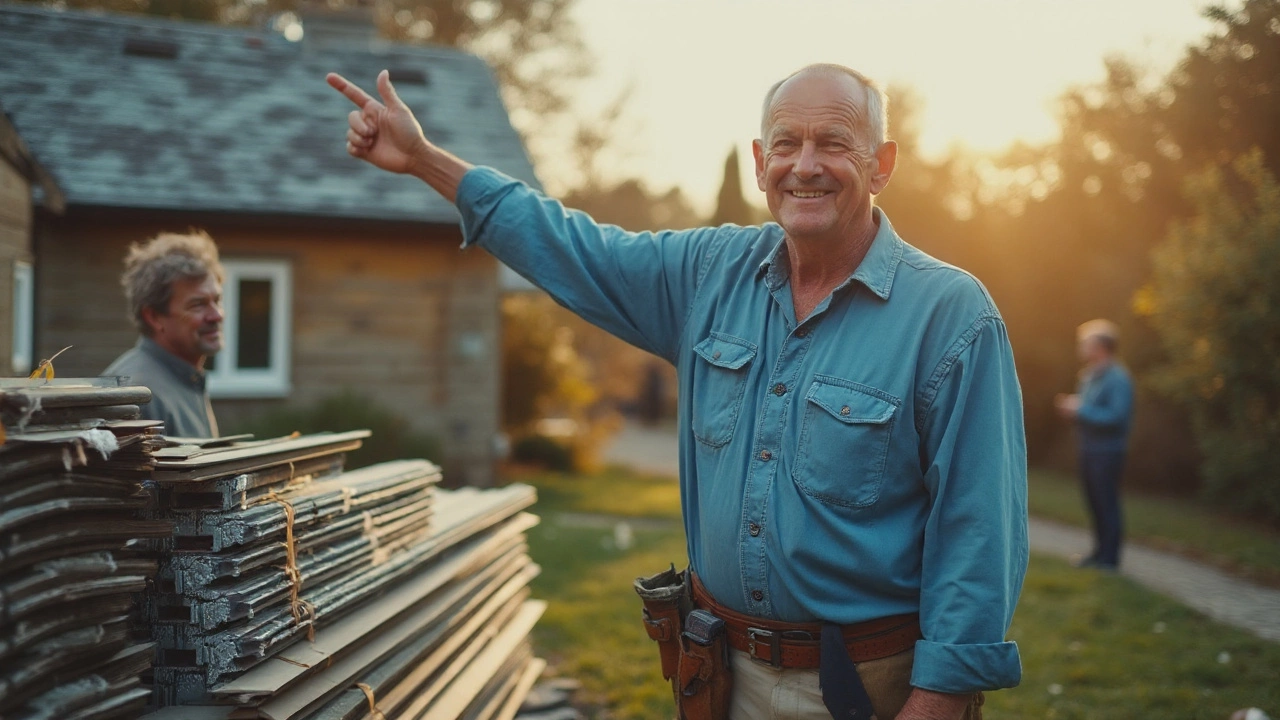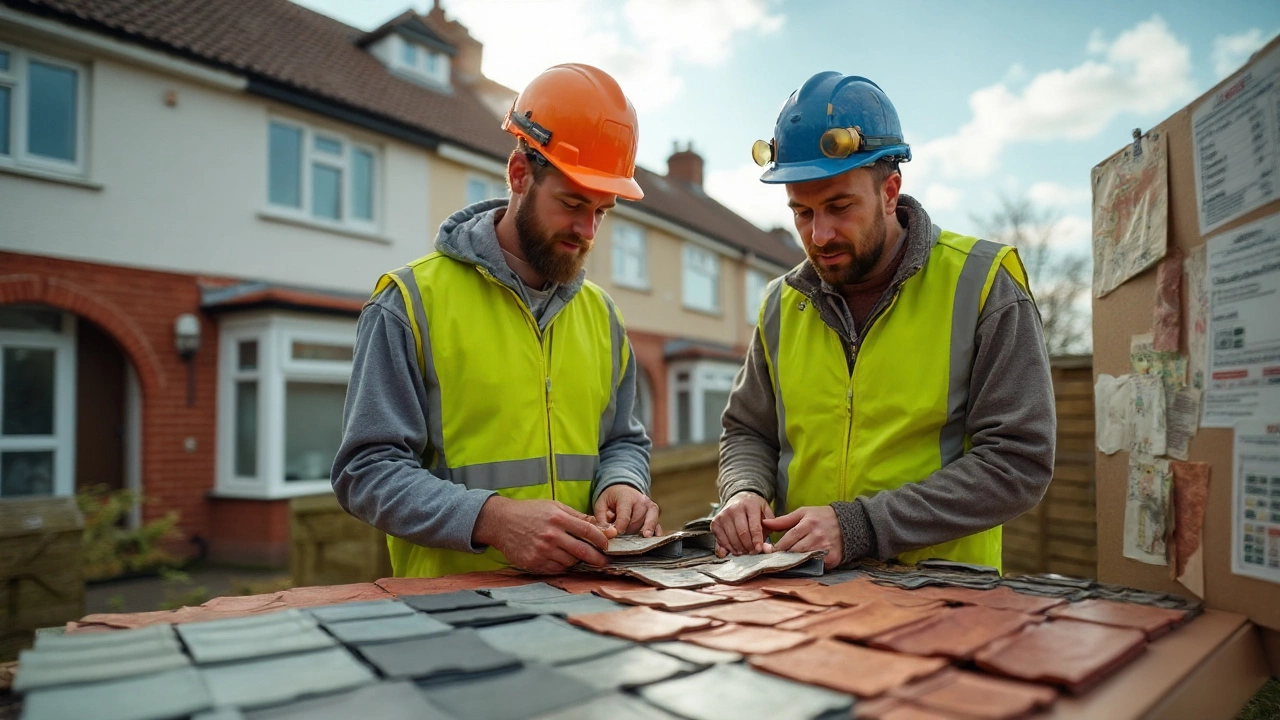You see a house wrapped up for a new roof, and maybe you instantly picture dollar signs flying out of the chimney. Roofing isn’t the most glamorous kind of home project, but it hits the wallet hard if you don’t know what you’re doing. Nobody wants to pay double for the same chunk of shingles, right? Whether you’re flipping a house, fixing up your own place, or just fighting off leaks one storm at a time, there are smart ways to get a tough roof over your head without busting the bank. This isn’t about cutting corners—just cutting costs where it counts.
The Real Story Behind Cheap Roofing: Materials that Save Big
Let’s break down the core question everybody asks when their old roof goes from “rustic” to “risky”—what materials are actually the cheapest if you want a solid, dry house? The answer’s not as simple as picking the lowest price on a shelf. Each roofing type has its own quirks, installation needs, lifespan, and upfront costs. Some roofs look dirt cheap now but will haunt your savings later on with repairs. Others cost a bit more up front but save bundles in the long haul.
The absolute winner for budget roofing in North America is the classic asphalt shingle—a favorite on suburban homes for decades. Asphalt shingles are everywhere for good reason: they’re affordable, easy to install, and come in decent colors. On average, asphalt shingles cost between $3.50 and $5.50 per square foot installed, which usually makes them the lowest bid. What’s wild is that you can often find deals at the major home improvement stores, especially if you pick up shingles on clearance or in bulk.
For even tighter budgets, basic rolled roofing (asphalt-saturated material in a roll) is even cheaper, coming in closer to $1.50–$2.50 per square foot. Rolled roofing is typically used for sheds, garages, and flat or low-slope roofs—not your prettiest option by far, but it works for outbuildings and ‘get by’ jobs. It’s the $2 sandwich of roofing: simple, not gourmet, but fills a need.
Here’s a side-by-side rundown:
| Material | Average Installed Cost (per sq. ft) | Lifespan (years) | Typical Use |
|---|---|---|---|
| Asphalt Shingles | $3.50–$5.50 | 15–30 | Most pitched roofs |
| Rolled Roofing | $1.50–$2.50 | 5–10 | Flat/low-slope, garages, sheds |
| Metal (corrugated steel) | $5.50–$8.50 | 30–50 | Barns, new builds, eco-homes |
| Concrete Tile | $6.00–$12.00 | 40–70 | Higher-end homes, custom designs |
| Wood Shake | $6.00–$9.00 | 20–40 | Historic, rustic homes |
Notice that asphalt shingles walk a nice line—a good blend of cost, looks, and years before you have to call in for repairs. Sparky, my dog, might not care what’s on the roof as long as the house is dry, but for most people, the cheap-and-cheerful asphalt route makes sense. But roll roofing? That’s only for places you don’t care too much about street-appeal or long-term performance.
What about those big metal panels you see on barns or slick modern homes? Corrugated steel and aluminum roofs are making a comeback, especially in rural areas and with anyone tracking long-term value. Metal costs more up front—usually about $5.50–$8.50 per square foot installed—but it lasts up to five decades and shrugs off storms and wind like it’s no big deal. For those who don’t want to bother with another roof within their lifetime, metal is still a bargain if you factor in repairs and replacements.
DIY vs. Hiring Pros: Where Can You Actually Save?
Let’s get real—most folks who want the cheapest way to roof a house also think about doing it themselves. I get it. Rolling up your sleeves can knock thousands off the bill. But roofing is no walk in the park—it’s dangerous, tricky, and mistakes can come back to bite hard, usually during the biggest rainstorm of the year. I know homeowners who thought they could handle a simple re-shingle, only to spend double fixing leaks and replacing crooked lines after the first season.
If you know your way around a hammer and have some balance (and friends who owe you favors), roofing a small house or shed is possible as a DIY job. You’ll save the labor—often half the installed price. Count on $1.50–$2.00 per square foot for asphalt shingles if you hunt for bargains and pick up supplies yourself. Don’t forget to budget for disposal (old shingles are heavy—they add up), basic underlayment, nails, drip edge, and a little extra for mistakes.
DIY isn’t for everyone. If you’re nervous about heights, time, or tools, don’t risk it. There’s a reason pros make their living up there. When you hire a pro crew, you get speed, safety, a warranty, and usually a better-finished look. Some contractors will match store prices for asphalt shingles if you ask, and many are open to you buying the materials yourself for further savings. Pro tip: get three bids, and pay close attention to the line items and reviews—cheap doesn’t mean good. Ask neighbors about who they hired and how it went. Sometimes you can split a dumpster with somebody else in the neighborhood getting a new roof, slicing waste costs for both.
One thing people forget: removing old shingles adds to both cost and hassle. Building codes in many areas require total tear-offs after two layers—no cheats. A full tear-down costs extra, but skipping it means risking warranty issues or roof rot later on. If your neighborhood allows overlay (new shingles over old ones) and your roof’s in good condition below, you can shave 20–30% off the cost, but this is a one-time move.

Secrets to Squeezing Every Penny: Tips for a Cheaper Roof That Lasts
Okay, so you’ve got the basics—now let’s talk tricks that most people miss. The first big tip: timing. Contractors slow down in late fall and early winter, and their bids often dip as work dries up. Roofing might not be the coziest cold-weather job, but a late-season project sometimes scores a 10–15% discount. The same goes for after big storms—contractors want steady work, so off-peak times bring better deals.
Hunting for coupons and bulk discounts is worth the time. Big box stores run sales on asphalt shingles several times a year, and local yards often have “overstock” or discontinued colors for less. If you aren’t picky about shade, you could save hundreds. Online marketplaces sometimes list leftover shingles from recent projects—always check for full bundles and matching lot codes to avoid mismatched pieces.
Recycling can work, too. Some demolition companies salvage gently-used metal roof panels or even clay tiles. If you have an outbuilding, garage, or shed project, it pays to ask around or scout local listings—often, the only cost is picking them up. For small utility or animal sheds, tar paper and roll roofing from the clearance aisle have saved me from more than one soggy disaster.
Don’t overlook ventilation and attic insulation. If your attic bakes in summer, your roof ages twice as fast. Good airflow extends shingle life—one fan or a proper ridge vent can make your bargain roof last five years longer. And don’t cheap out on underlayment (the felt or synthetic layer under the shingles). Decent underlayment protects wood decking and keeps leaks at bay, even if you go cheap up top.
Flashings—those little strips of metal around chimneys and edges—matter more than braggy designer shingles. Old, dented, or misfit flashings are behind most leaky roofs. Upgrade or replace them for not much more, and your new roof won’t let you down the first time wind gusts start howling.
If you’ve got a flat or low-slope roof, a rubber membrane (EPDM) can be a smart option. It runs about $4.00–$6.00 per square foot, but the ease of installation and patching means some people manage to do it themselves. EPDM is tough stuff, surviving hail and snow for decades. Just don’t skimp on quality sealant around edges and pipes—cheapest isn’t always cheapest if everything’s ruined by one missed bead of caulk.
Finally, check for local and manufacturer rebates. Some regions give credits for cool, reflective surfaces that lower energy bills, or you might find warranty bonuses for sticking with a full branded “roofing system.” Dig through the fine print, and you might score an extra warranty or cash back for things you’d have to buy anyway.
Real-World Examples, Stories, and Caution Signs
Let me share a couple of examples I’ve seen up close—because nobody wants to learn the hard way. My buddy Jack jumped at a $1 per square foot deal on “closeout” rolled roofing for his garage workshop. It kept the rain out for about six years, but two winters later, leaks began at the seams, and a windy spring peeled half the roof like a banana. He had to re-roof, paying twice in one decade. Jack admits now—it was a win, only for a short-term fix. Rolled roofing made sense only because the garage wasn’t heated or finished inside. Lesson: cheap isn’t always cheerful if you need peace of mind.
On my own place, I picked up mid-range architectural asphalt shingles in a discontinued slate color for 40% off. It made no difference to Sparky (he doesn’t see color), but the savings meant I could put more into attic insulation and ice barriers. Three winters and several storms in, not a drip. Watching for closeouts instead of custom ordering made a huge dent in my upfront bill without changing performance at all.
Another neighbor, Sue, teamed up with two others on her street to all hire the same roofing crew during a slow November. Contractor loved keeping the crew busy during the off-season, and all three families saved about $800 each compared to peak spring rates. I asked her last month if the roof still looks solid—zero regrets, zero leaks. Timing pays, especially if you coordinate with neighbors.
But there are landmines. A coworker went with a “cheapest in town” ad from a guy with a business card and a promise. The roof job took forever, finished lopsided, and leaked after the first hard rain. The so-called contractor vanished with half the payment. Now there’s a lien on the house, plus double the expense for a new crew to repair damage. The moral: Read reviews, check licenses, and verify insurance. Cheap up front isn’t worth a scam or a ruined home.
Here’s a final tip—don’t forget about warranties. Most manufacturers (like GAF or CertainTeed) only back their shingle brands if they’re installed by certified pros. That’s peace of mind, especially for first-timers or rental properties. The little extra you pay for pro installation can save thousands if weather damage hits, and repairs fall under warranty coverage instead of coming straight from your pocket.
If you want the
- rock-bottom lowest price, rolled roofing is king on simple buildings and sheds,
- budget with curb appeal and decent life span, basic asphalt shingles are the champion,
- something that lasts seemingly forever, metal panels will cost more now but less across decades,
- and whatever you choose, watch for sales, act in the off-season, and ask around for deals on tear-off and installation.

Author
Damon Blackwood
I'm a seasoned consultant in the services industry, focusing primarily on project management and operational efficiency. I have a passion for writing about construction trends, exploring innovative techniques, and the impact of technology on traditional building practices. My work involves collaborating with construction firms to optimize their operations, ensuring they meet the industry's evolving demands. Through my writing, I aim to educate and inspire professionals in the construction field, sharing valuable insights and practical advice to enhance their projects.